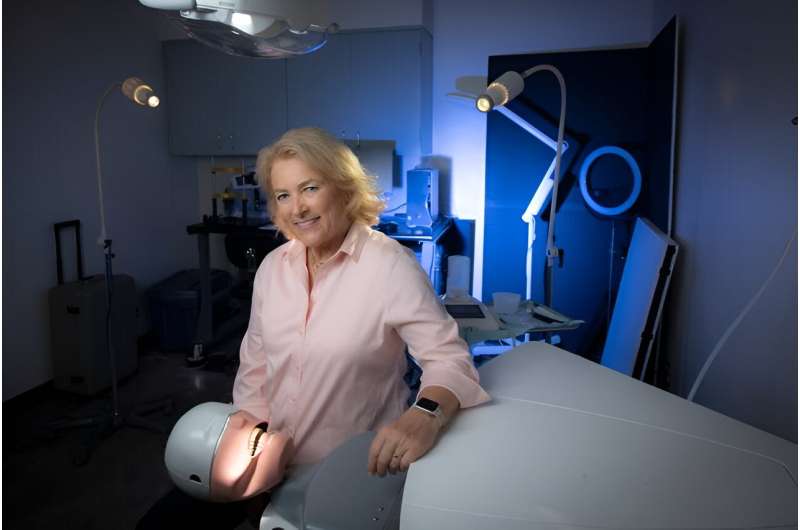This article has been reviewed according to Science X's editorial process and policies. Editors have highlighted the following attributes while ensuring the content's credibility:
fact-checked
trusted source
proofread
A commercial intraoral camera with the ability to screen for cancer

At the forefront of a movement to rewrite oral and oropharyngeal cancer outcomes, Dr. Petra Wilder-Smith has spent the last two decades working on devices for early detection.
Now, in collaboration with Rongguang Liang at the University of Arizona's Wyant College of Optical Sciences, the director of dentistry at UC Irvine's Beckman Laser Institute & Medical Clinic and a professor of medicine has developed a commercial intraoral camera with the ability to screen for cancer.
The current method for oral cancer detection involves a professional looking into the mouth and feeling for lumps. Oral cancer lesions are largely heterogeneous, so they present in many different, easy-to-miss forms. Since treatment is planned around an oral biopsy, it's best to be able to identify and take a sample from the most dangerous part of the lesion.
"There's everything from little dots with severe cancer to little dots that are healthy and to little areas that are in between," Wilder-Smith says. "Just by looking at it, I don't know where to biopsy, because I can't tell where the most severe disease is."
Testing has shown that her and Liang's intraoral camera will boost the accuracy of oral cancer detection from 40 to 60 percent to 87 to 93 percent. This will change dentistry for end-users, says hygienist Cherie Wink, a researcher at the Beckman Laser Institute and an instructor in San Joaquin Valley College's dental hygiene program.
"As a clinician," she says, "this device will eliminate the guesswork in interpreting clinical findings, leading to earlier diagnoses and improved patient outcomes."
A patent was recently secured with help from UCI Beall Applied Innovation, which oversees all the campus's patents and licensing efforts. Alvin Viray, its associate director of licensing, is proud to be part of the project.
"Dr. Wilder-Smith has been nothing short of exceptional," he says. "Her development of an imaging device for oral cancer detection is both innovative and commercially valuable, while promising to make a profound impact on public health."
UC Irvine and the University of Arizona own the camera's patent. While the device has not been licensed yet, Wilder-Smith will soon be seeking a second stage of investors, and Viray is in licensing discussions.
The camera has already seen 10 prototypes. One was smartphone-based and took the form of a phone case that, when connected to an intraoral camera, could image oral lesions. There is currently a final prototype being used for testing and algorithm fine-tuning. The next step is to evaluate it for manufacturing.
In her career at the Beckman Laser Institute, Wilder-Smith has also worked on other devices. She was part of a team that redesigned tools generating aerosol emissions so they would stop spreading aerosol-transmissible illnesses, such as colds and the flu.
Wilder-Smith has also been involved in studies linking topical oral treatments to changes in the microbiome and the gastrointestinal tract, which can have far-reaching consequences for whole-body health. But her main focus now remains on the intraoral camera.
"Quite simply, my goal is to improve oral cancer outcomes," she says, "because it's the only major cancer whose outcomes are still getting worse."




















